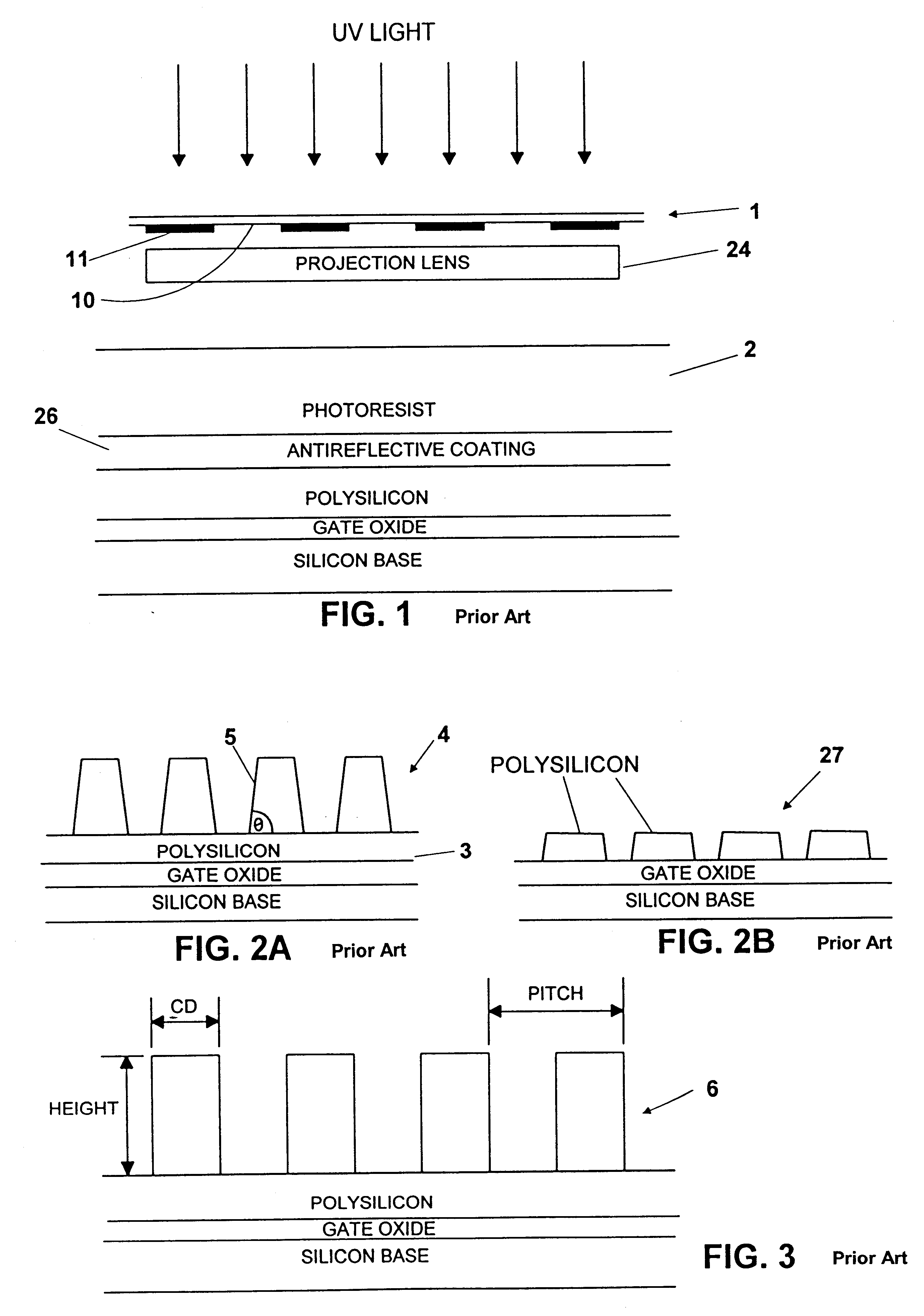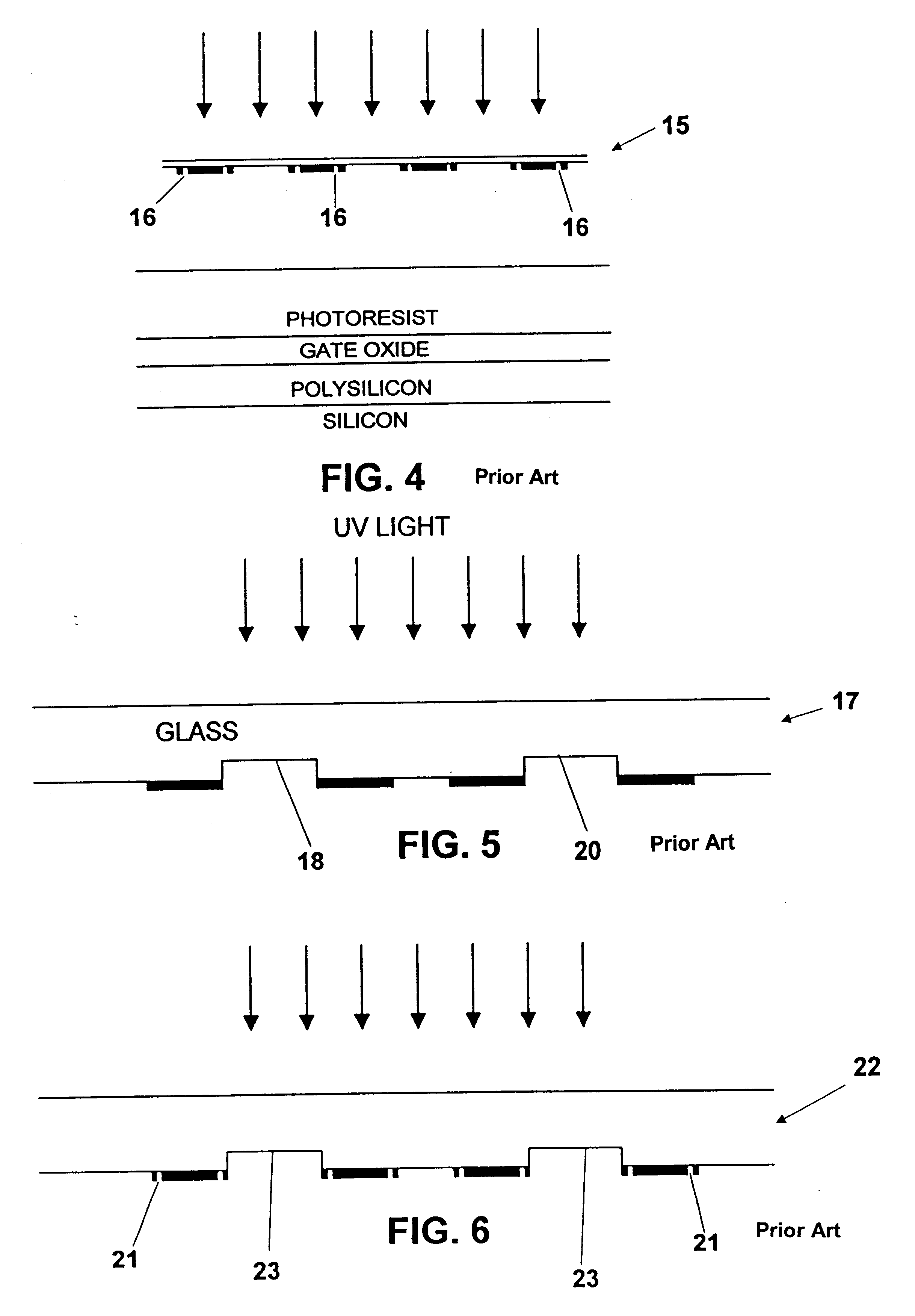Method and apparatus for the determination of mask rules using scatterometry
- Summary
- Abstract
- Description
- Claims
- Application Information
AI Technical Summary
Problems solved by technology
Method used
Image
Examples
Embodiment Construction
A second preferred embodiment is shown by reference to FIG. 18. In the second preferred embodiment grating patterns 81 through 110 are replaced by bi-periodic grating patterns. Bi-periodic grating pattern 140 with OPC correction lines 142 is shown in FIG. 18. Bi-periodic grating pattern 140 is referred to as being a bi-periodic grating because there are two repeating pitches throughout the grating. The first pitch refers to the pitch distance between adjacent lines within each group 170, 180 and 190. The second pitch refers to the pitch distance between adjacent groups. Applicants have shown through simulation that by diffracting light off gratings created by a bi-periodic grating pattern, the user can better ascertain the profile of each line within the group if the scatterometry library is created using the robust RCWA technique implemented in the ODP technique described in the background section. For example, in groups 170, 180 and 190 there is a first line 150. This line is an e...
PUM
 Login to View More
Login to View More Abstract
Description
Claims
Application Information
 Login to View More
Login to View More - R&D
- Intellectual Property
- Life Sciences
- Materials
- Tech Scout
- Unparalleled Data Quality
- Higher Quality Content
- 60% Fewer Hallucinations
Browse by: Latest US Patents, China's latest patents, Technical Efficacy Thesaurus, Application Domain, Technology Topic, Popular Technical Reports.
© 2025 PatSnap. All rights reserved.Legal|Privacy policy|Modern Slavery Act Transparency Statement|Sitemap|About US| Contact US: help@patsnap.com



